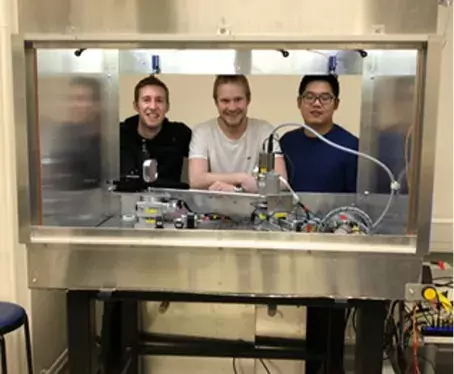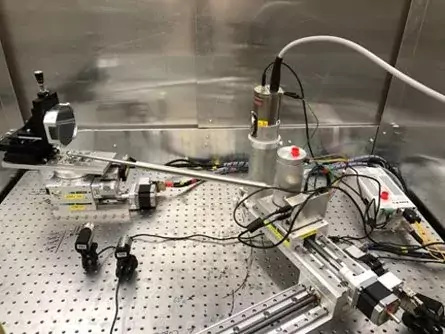Sampo
Its location at the
The Sampo spectrometer, also known as RadXAS, is a Johann-type Rowland circle spectrometer and uses spherically bent crystal analyzers with bending radius R=0.5 m. The
| X-ray source | Rh and Pd anodes available, 36um x 48um source size |
| Detectors | Silicon drift diode ( |
| Sample environments | Sample exchanger wheel with 16 sample slots for e.g., powder pellets and foils |
X-ray absorption (XAS) techniques XANES and EXAFS are essential tools for chemists to study the chemical behavior of different elements. At radiochemistry unit we are interested in both studying novel materials used for the decontamination of radioactive waste and the behavior of radionuclides in natural environments. In both of these topics, the XAS techniques can be utilized to gain new knowledge in order to minimize the radiation hazards to environment.
The research on the novel materials used for the decontamination of radioactive waste requires a comprehensive understanding about the materials synthesized. This knowledge is used to modify the materials in order to maximize the performance of removing radionuclides from the waste. Without a proper knowledge of the structure of the materials it is complicated or impossible to understand the mechanisms how the contaminants are scavenged from the waste. For example, redox active elements are often used in the adsorbents to enhance the removal capability. Here XAS offers an excellent tool to investigate the redox state of those elements within the structure of the adsorbent materials before and after or even during the decontamination process. From the other way around, also the oxidation state of the contaminants may play a crucial role in the process and can even change during the adsorption. These aspects also apply for the research of natural materials and their interaction with radionuclides revealing how radionuclides are migrating in the natural environments.
After collaborating with our physicist colleagues regarding the XAS studies, we at Radiochemistry unit realized that there would be a need for another instrument. The instrument was built based on the instrumental design of HelXAS spectrometer in 2019 by radiochemists with collaboration with the people at Helsinki X-ray laboratory. One of the most critical aspects is that our instrument is located in a class C radionuclide laboratory where also samples exceeding the exemption value of radionuclides can be handled and measured.
At the moment, the instrument is able to measure in transmission and fluorescence modes.

